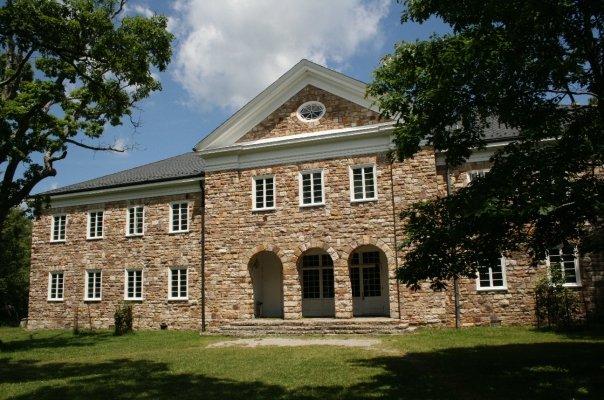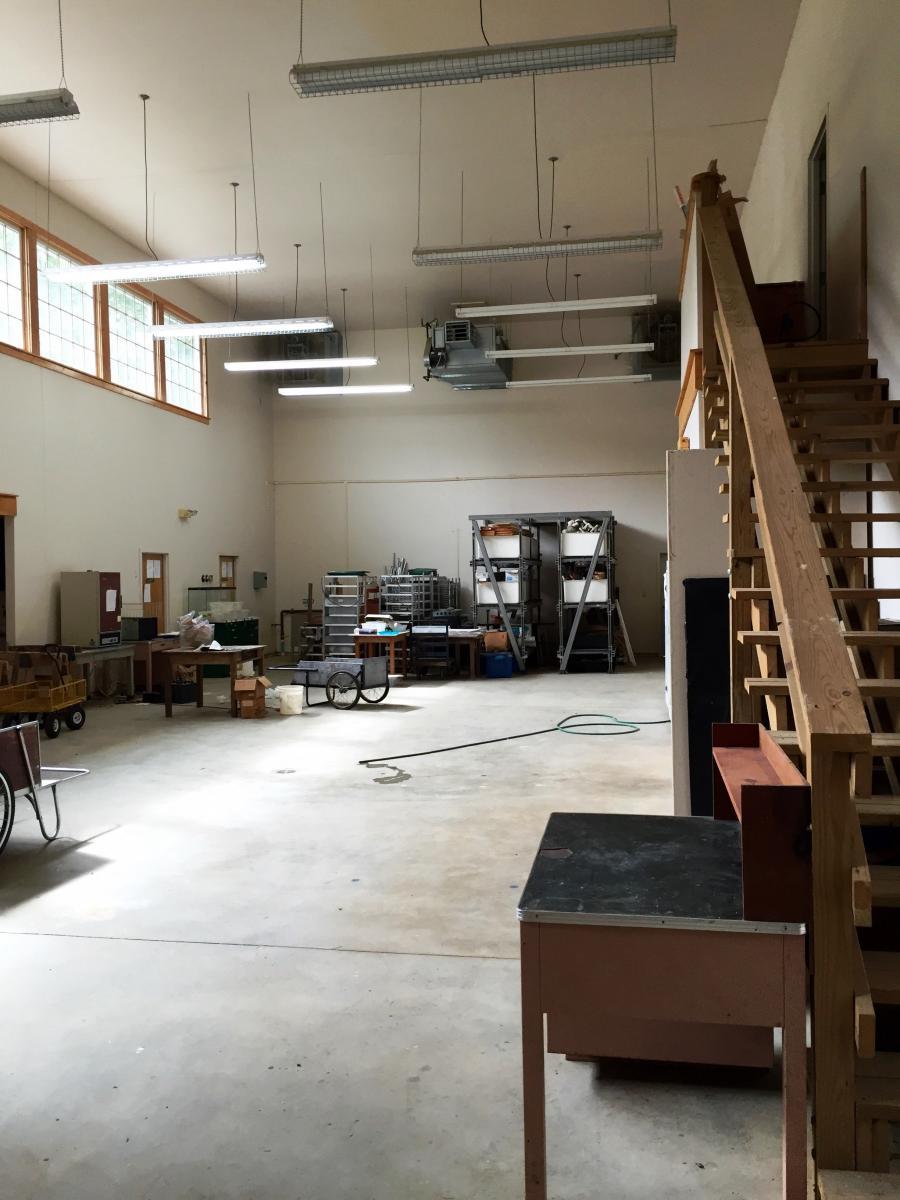What is MLBS?

Mountain Lake Biological Station is a full-service residential field station located atop Salt Pond Mountain in the southern Appalachians of southwest Virginia. Programs include summer field courses, Research Experiences for Undergraduates, numerous faculty-driven research projects, scientific meetings, outreach activities, and more. An average high-season day at MLBS hosts 50-100 people, including undergraduate and graduate students, research faculty from around the world, and family members. Everyone in the community works, eats, and lives together everyday, integrating research and mentorship in the truest sense of a Jeffersonian “academical village.”
The Station is remote but accessible, and is surrounded by sharp ecological gradients and fine-scale changes in habitat-- ideal conditions for studying ecology and evolution. Visiting scientists conduct research in plant and animal population biology, behavioral ecology, life history evolution, community ecology, ecological genetics, biosystematics, epidemiology, conservation biology, and the physiology of behavior. Biologists interested in field studies are encouraged to consider Mountain Lake as a home for their research. Station use is supported year round.
The Site

Immersion in protected natural areas is a key appeal of MLBS for both research and training. The station ( 37.375654° -80.522140°) sits on a remote wooded ridge at an elevation of 1,160m (3,800ft) precisely on the divide between the Atlantic and Mississippi drainage basins in the Appalachian Mountains of southwestern Virginia. The Station consists of a forested reserve of 259ha on which UVA holds a renewable 50-year lease. Adjoining the station is the Jefferson National Forest, where over 40,470ha of woodland are available for study. Of this forest, 4,250ha adjacent to MLBS are designated as NFS Wilderness. The Mountain Lake Lodge owns another 1,012ha bordering MLBS, and welcomes its use for teaching and research. Mountain Lake itself, which is within walking distance, is the only naturally-formed lake in the unglaciated Appalachians. The variety of rich and diverse habitats near MLBS provide excellent opportunities for studies in terrestrial and aquatic field biology. Mixed deciduous forests, mountain streams, successional meadows, a large natural lake, ponds, rocky ridges, sphagnum bogs, stands of red spruce, Canadian hemlock, white pine, and both disturbed and virgin habitats are all within walking distance of the Station. Because MLBS is located on the eastern continental divide and is surrounded by strong elevational and environmental gradients, it is uniquely situated to provide abundant opportunities for observational and experimental studies on scales relevant to the ecology and evolution of many plant and animal populations.
Physical Plant

The Station maintains over 30 buildings, many of which date from the early 1930s. In the past 20 years, UVA has contributed over $2,000,000 to the renovation and new construction of MLBS facilities and equipment. In addition to building upgrades and renovation, supported projects in the past 20 years include a new water treatment system, construction of the Wilbur laboratory, construction of a winterized dorm, lead and asbestos abatement, and installation of a computer network with high-speed internet. The semi-open Walton Pavilion was built in the early 1980s. The Pavilion is used for group meetings, field trips, and Sunday night cookouts, as well as dances and other recreational functions.

The Station has two large laboratory buildings. Ruth Patrick Hall houses three teaching classrooms, lab spaces for independent research groups, common-use chemistry and microbiology labs, an auditorium with a projection and sound system, a library with on-line catalog, the main office, a stockroom, an herbarium, and other collections. Wilbur Laboratory houses a computer lab, microscope and image analysis facility, two environmental rooms for animal husbandry, extended range growth chambers, a fully equipped woodworking shop, and a large multipurpose room that accommodates a wide variety of indoor research needs.

Scientific equipment and facilities housed in our lab buildings include environmental data logging, GPS, high quality microscopes (including epiflorescence), digital imaging equipment, balances, incubators, ovens, an autoclave, refrigerators, freezers, a -80C freezer, a laminar flow hood, a biosafety cabinet, controlled environment chambers, and a full array of basic field and lab equipment. The wet lab in Ruth Patrick Hall houses a fume hood, DI and distilled water filtration systems. Several research exclosures and a large greenhouse are maintained on site. Regular equipment upgrades and replacement are funded annually by UVA.
The Station maintains a variety of databases including a comprehensive local geographic information system, on-site automated weather station data, historical species lists, biological collection records, and a Station publication list dating back to the Station’s founding. NADP/NTN Monitoring Location VA13 – “Horton Station” is 4km from the station, and data are available online. NCDC/NOAA data were collected at MLBS between 1971 and 1997 and are also available online.
Housing and dining facilities

The Station's accommodations include a variety of cottages (various occupancies and layouts) and dorms, one of which is winterized. The Jefferson Dining Hall has a large commercial kitchen and seating area that serves three meals a day to all station residents in the summer season. When the dining hall is not open, residents may use a self-serve, common-use kitchen in Murray Dorm. Click here to learn about buildings' namesakes.
In 2000, MLBS was included in the Greater Newport Historic District. All buildings at the station greater than 50 years old (includes all but two residential buildings) are listed as “historic” in Virginia State and Federal Historic Registers. Although significant improvements to the facility are ongoing, UVA is committed to protecting the integrity of its historically significant structures and therefore vets all planned actions through UVA Architects before proceeding.
Administration
MLBS is a unit of the College of Arts and Sciences at University of Virginia. The campus office in Charlottesville, Virginia, is staffed by the Director, Associate Director, and Office Manager. The Station itself is located in Giles County, Virginia, and is staffed full time by the Station Manager, who is responsible for day-to-day operations at the Station, and the Facilities Superintendent, who maintains the buildings and grounds. During the summer the Director and Associate Director are in residence, and two summer staff assist the Manager.
History

MLBS was established in 1930 by the University of Virginia’s (UVA) Department of Biology as a summer facility for teaching and research. The prominence of MLBS as a national research station took hold in the late 1960’s and early 1970’s as population based field research was gaining momentum and MLBS became one of a few very active field stations in that area.
MLBS Directors
- Bruce Reynolds, 1930-32, 1947-56
- Ivey Lewis, 1933-46
- Horton Hobbs, 1957-60
- Jim Riopel, 1961-63, 1965-79 odd years, 1980, 1982
- J. James Murray Jr., 1964-78 even years, 1981, 1983, 1988-90
- Jerry O. Wolff, 1984-1985
- Blaine J. Cole, 1986-1987
- Henry M. Wilbur, 1991-2006
- Edmund D. Brodie III, 2007-present
